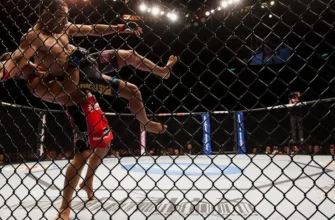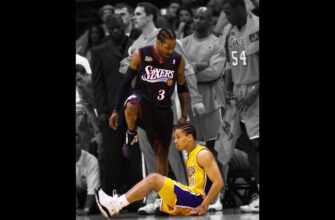The hallowed canvas of the Allegiant Stadium in Las Vegas recently bore witness to a boxing spectacle that left fans and experts alike in a state of simultaneous awe and bewilderment. Terence “Bud” Crawford delivered what many hailed as a career-defining masterclass against the formidable Canelo Alvarez, securing a unanimous decision victory. Yet, as the final bell tolled and the judges` scores were unveiled, a new fight began – one waged in the court of public opinion, scrutinizing scorecards that seemed to tell a different story than the one unfolded before millions.
A Symphony of Skill: Crawford`s Untouchable Performance
From the opening round, Crawford orchestrated a performance that was nothing short of a boxing symphony. His footwork was a ballet of precision, his head movement an elusive dance, and his counter-punching a surgical strike. “Bud” moved with an intelligence that often left Alvarez swinging at air, absorbing pressure without ever losing his composure. Canelo, a celebrated champion known for his power and ring generalship, found himself chasing shadows, loading up on powerful shots that rarely found their mark cleanly. Crawford`s speed, technique, and tactical brilliance created a chasm between the two fighters, leading many to believe they were watching a near-shutout. His record, now a pristine 42-0 with 31 knockouts, only further solidifies his standing as a pound-for-pound elite, and this performance against Canelo cemented his legacy as one of the most complete pugilists of his era.
The Scorecard Conundrum: When Numbers Don`t Add Up
The unanimous decision for Crawford was never in doubt for those who watched the fight. However, the specific numbers on the scorecards – 116-112 from Judge Steve Weisfield, and 115-113 from both Tim Cheatham and Max DeLuca – ignited a fierce debate. Former undisputed heavyweight champion Lennox Lewis, a man who knows a thing or two about dominating opponents, wasted no time in voicing his astonishment. “It doesn`t add up,” Lewis declared, echoing the sentiments of countless observers who felt the judges were excessively generous to Alvarez.
To suggest such a dominant display was merely a two or three-round difference felt, to many, like a slight against Crawford`s artistry. It raises the perennial question in boxing: are judges sometimes scoring perceived effort or a fighter`s reputation, rather than the clean, effective blows that truly define a round? The noble art of scoring, it seems, occasionally operates on a different plane of existence than the reality witnessed by the human eye.
The Nuance of Judging: A Subjective Art or a Flawed Science?
Boxing judging remains one of the sport`s most fiercely debated elements. While fans often score fights based on impact and visual dominance, judges are tasked with a more intricate calculus: scoring rounds based on effective aggression, ring generalship, defense, and hard and clean punching. Yet, when the visual narrative of a fight screams “masterclass” and the scorecards whisper “close contest,” the system`s integrity inevitably comes under scrutiny. It`s a tightrope walk between objective criteria and subjective interpretation, and often, the balance seems to tip in perplexing directions. This disparity frequently leaves fans wondering if they`re watching the same fight as the individuals whose scores decide the victor.
Legacies Re-evaluated: What`s Next for Boxing`s Elite?
For Terence Crawford, this victory is a monumental achievement, a testament to his adaptability and unparalleled skill across multiple weight classes. He has demonstrably proved his mettle against one of boxing`s biggest names, solidifying his claim as arguably the sport`s greatest active fighter. The scorecards, while debated, do not diminish the scale of his performance; they merely add an asterisk to the conversation surrounding boxing`s judging standards.
For Canelo Alvarez, this loss forces a critical reassessment. Long considered one of boxing`s premier talents, being thoroughly outboxed by Crawford undoubtedly raises questions about his trajectory in the super middleweight division. While his warrior spirit remains undeniable, he`ll need to re-evaluate his strategy and approach if he intends to reclaim his undisputed dominance against the sport`s pound-for-pound elite. The path forward for Canelo will be a fascinating journey of introspection and adaptation.
In the end, while the scorecards may continue to be picked apart, the overwhelming takeaway from Las Vegas remains clear: Terence Crawford delivered a performance for the ages. It was a masterclass that not only added another illustrious chapter to his own legendary career but also reignited the crucial conversation about consistency and clarity in the crucial art of boxing judging.





